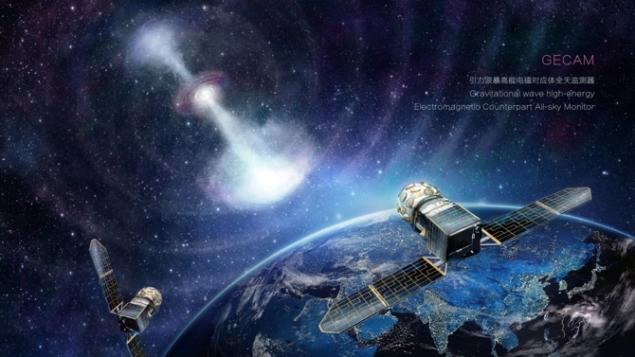
Eye on the sky: the Gravitational wave high-energy Electromagnetic Counterpart All-sky Monitor will study the gamma rays that emerge when neutron stars merge. (Courtesy: NSSC)
China has revealed plans for two space-based missions to study gravitational waves. The National Space Science Center, Chinese Academy of Sciences (CAS), announced on 4 July that the country will launch a mission in 2020 to monitor gamma-ray bursts associated with gravitational-wave events. The CAS also gave the go-ahead for a fully-fledged gravitational-wave detector to be sent into space in 2033.
Gravitational waves are distortions of space–time that occur when massive bodies, such as black holes, are accelerated. Since their first direct detection in 2015 by the Laser Interferometer Gravitational-Wave Observatory (LIGO) detectors in Washington and Louisiana, scientists have since picked up several other events from the merger of black holes as well as neutron stars.
While scientists have the capability to detect such events, pinpointing their exact location is difficult with ground-based gravitational-wave detectors. This can be improved, however, by follow-up observations from ground- and space-based telescopes operating at various wavelengths. Gamma rays, for example, can play a unique role in this effort. During the merger of two neutron stars, a gamma-ray burst usually happens right after the generation of gravitational waves and before X-ray, optical and radio wavelengths can be detected.
(来源:https://physicsworld.com/a/china-unveils-plans-for-two-new-gravitational-wave-missions/)
